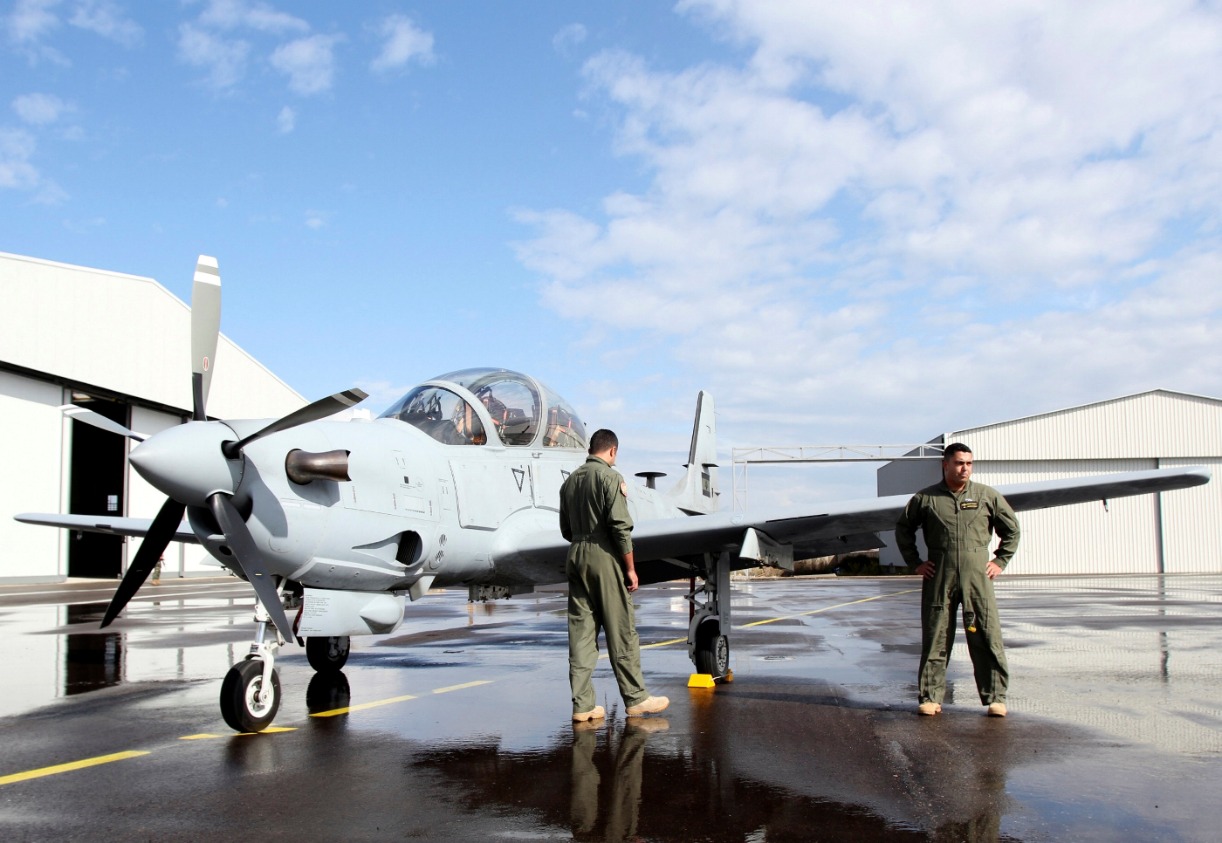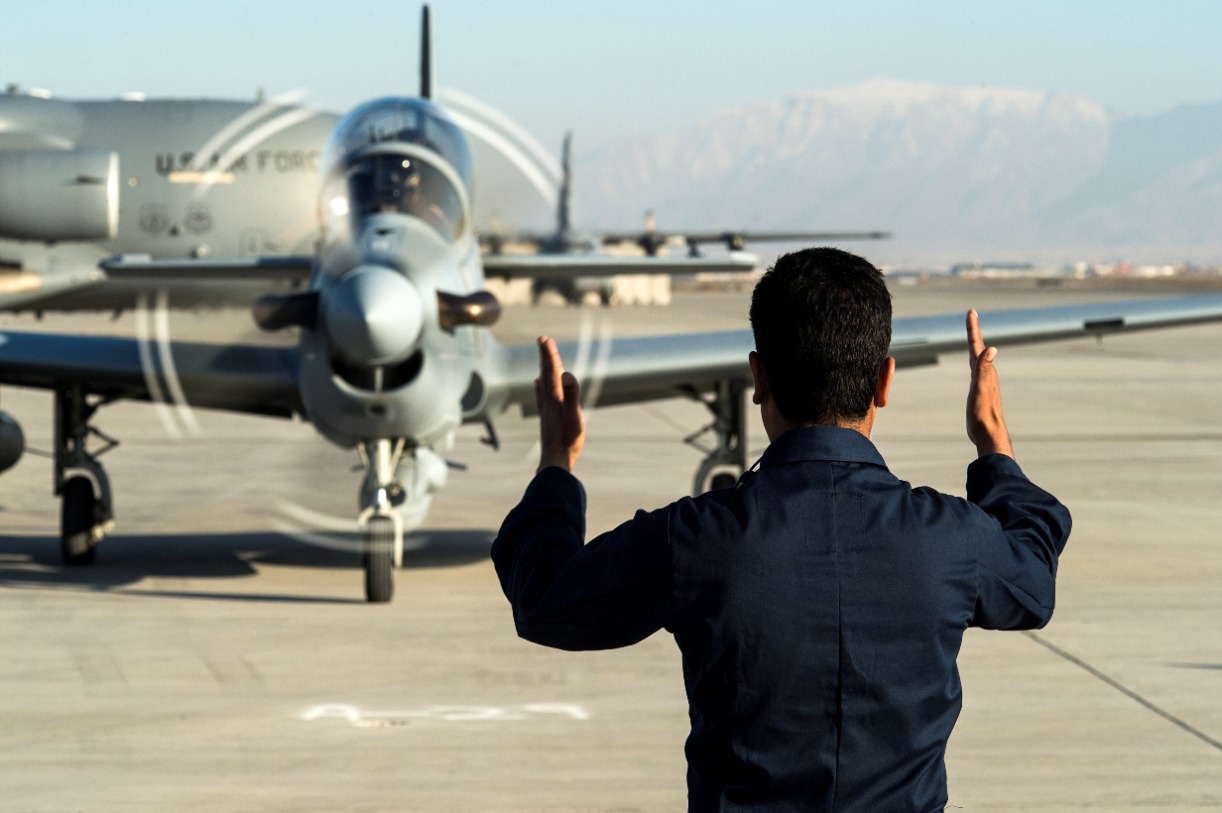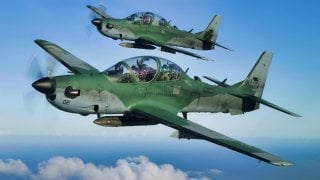U.S. Air Force Is 'Training' on A-29 Super Tucano Attack Aircraft
The United States Air Force Test Pilot School at Edwards Air Force Base has added three Embraer A-29 Super Tucano aircraft to its fleet—the first new aircraft assigned to the school in nearly 30 years.
What You Need to Know: The United States Air Force Test Pilot School at Edwards Air Force Base has added three Embraer A-29 Super Tucano aircraft to its fleet—the first new aircraft assigned to the school in nearly 30 years.

-Originally acquired by Air Force Special Operations Command but later divested, the A-29s were saved from potential foreign military sale and will now enhance training and research capabilities. The turboprop aircraft is equipped with modern avionics and is ideal for spin testing and carrying various sensors and weapons.
-The addition may reduce reliance on T-38 and F-16 aircraft for training. There's also chatter about the A-29 potentially replacing the A-10 Thunderbolt II for close air support missions due to its loiter time and multi-place cockpit.
A-29 Super Tucanos Join Air Force Training Fleet at Edwards AFB
The United States Air Force Test Pilot School at Edwards Air Force Base (AFB), California, received the first "newly assigned aircraft" in almost three decades, the air service announced this week. However, it hasn't received brand new state-of-the-art fighters – instead, its fleet now includes three Embraer A-29 Super Tucano aircraft.
According to The War Zone, the A-29s arrived at Edwards AFB in July, but it wasn't until this week that the 412th Test Wing, the unit that runs the Test Pilot School, officially received the aircraft.

"The decision to transfer A-29 aircraft to Edwards is a result of thoughtful analysis by the Test Pilot School and an excellent example of command agility and collaboration to take advantage of a unique, fleeting opportunity," explained Michael Banzet, Air Force Test Center plans and programs director. "Not only does this repurpose a $63 million taxpayer investment, it also modernizes and expands TPS curriculum to accelerate the fielding of combat capability for the U.S. Air Force."
A Super Cost-Effective CAS Aircraft
As an aircraft design, it is far newer than the F-15 or F-16, and though a turboprop aircraft, the A-29 Super Tucano was developed in the 1990s. It may not be able to hold its own against a modern fighter, but that's not really what it was designed for, rather it was designed as a low-cost close-air support (CAS) aircraft that could operate from austere airfields. For CAS missions, it is armed with twin .50 caliber machine guns on each wing along with five hardpoints for ground attack munitions.
During its service with air forces around the world, notably in South America and Asia, the Super Tucano has amassed 60,000 combat hours, including drug interdiction operations.
Change of Roles
According to the Air Force, the three A-29 Super Tucano aircraft "were originally acquired by Air Force Special Operations Command but divested after mission requirements changed." First acquired by AFSOC in 2017, the A-29 was considered for use in the Armed Overwatch program, but the command opted instead to move forward with a militarized version of the AT-802 crop duster.
When the AFSOC no longer saw a need for the A-29s, the Air Force Test Center and the school's leadership saw an opportunity to obtain the aircraft, which had been kept at the Davis-Monthan AFB "Boneyard" in Arizona – while the service considered unloading the propeller-driven planes as a possible Foreign Military Sale (FMS).
Instead of heading off to a U.S. partner, the Super Tucanos will now be used as TPS looks to expand its flight test and training capabilities. The A-29's airframe design makes it well suited for spin testing, while due to the fact that it is still a post-Cold War-era aircraft means it is equipped with modern avionics, and even offers the option of employing externally hung equipment on its wing pylons.
That latter fact will enable TPS to carry out training and research "on a variety of multi-domain sensors and weapons," and could help reduce "reliance on T-38 and F-16 aircraft while enhancing the ability to perform aspects of the developmental test mission tasked to the Air Force Test Center," the service acknowledged.
Replacing the A-10
Although the role of the A-29 Super Tucano will likely be limited to training, there have been calls for it to be employed as CAS aircraft – replacing the venerable Fairchild Republic A-10 Thunderbolt II.
"The A-29 is a more than suitable candidate to replace the A-10," wrote Maya Carlin for The National Interest. "The A-10 is not suited to operations in a contested airspace against a peer or near-peer adversary therefore its primary use is in low-intensity and counter-insurgency CAS. For those missions, the loiter time of the A-29 combined with its multi-place cockpit make it an ideal platform."
Carlin added, "The longer the A-29 can remain on station, the longer it can support ground assets. Additionally, the value of having two aircrew to maintain situational awareness in a dynamic CAS environment cannot be understated."
Author Experience and Expertise: Peter Suciu
Peter Suciu is a Michigan-based writer. He has contributed to more than four dozen magazines, newspapers, and websites with over 3,200 published pieces over a twenty-year career in journalism. He regularly writes about military hardware, firearms history, cybersecurity, politics, and international affairs. Peter is also a Contributing Writer for Forbes and Clearance Jobs. You can follow him on Twitter: @PeterSuciu. You can email the author: [email protected].
Image Credit: Creative Commons and/or Shutterstock.


